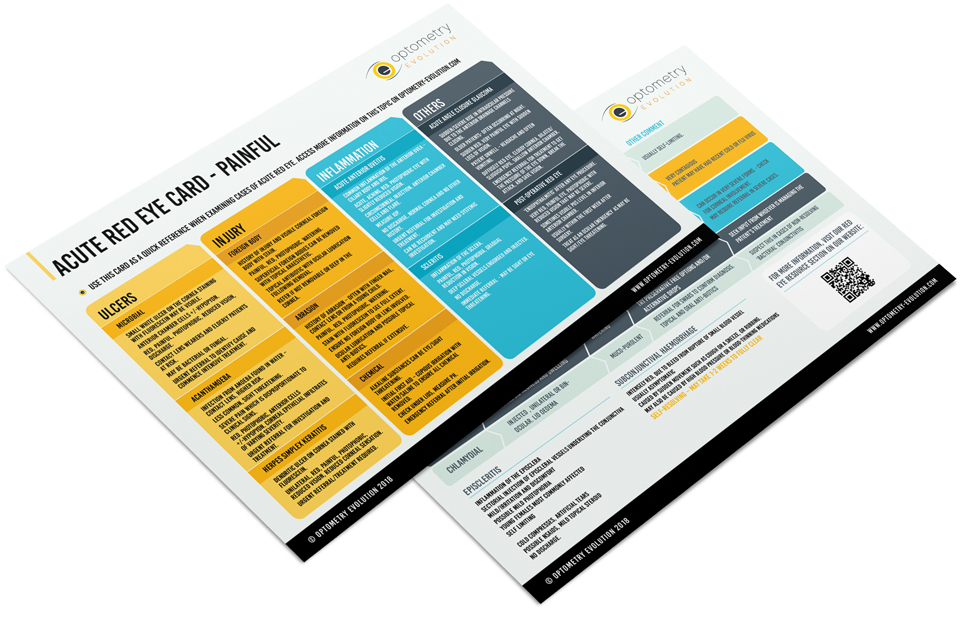Red Eye Resources

Welcome to the new Red-Eye Section of Optometry-Evolution!
Acute red-eyes are a really common presentation both to optometrists and eye clinics, but also to GPs and pharmacists. Red eye covers such a wide range of conditions from the fairly minor to very serious, potentially sight and eye threatening conditions. It is therefore vital for whoever has first contact with the patient to be able to identify the conditions and situations where swift and decisive action is required.
A consultant ophthalmologist colleague of mine once said – ‘There is often no such thing as a straightforward case of red eye,’ which is why we all need to keep our clinical knowledge in this area up to date.
I am currently in the process of developing some resources on this topic which will provide a quick reference guides when examining a red eye patient with lots of clinical information to aid diagnosis and guide management.
The first of these is The Acute Red Eye Card, and is now available to order from the website.
The other cards currently in development include one which will take a differential diagnosis approach to these same conditions and try to guide the clinician through in arriving at a diagnosis, and ultimately how the patient may have to be managed. Finally, I am developing a card for non-professional staff members such as optometry practice staff, pharmacy counter staff and health care assistants, all of whom may be the very first point of contact for the patient. This card will help them ask the key questions that will highlight those patients who really need to be seen as a matter of urgency versus those who can be seen more routinely. Again, all part of getting the patient journey correct from the start.
Finally, in the coming months I want to develop this online arm of these resources to include guidance on examination of a red-eye patients and other information such as cases with images etc, to help support clinicians in this whole area, so please keep a regular watch on the site for this material as it develops.
Useful links:
BMJ Best Practice – Assessment of Red Eye https://bestpractice.bmj.com/topics/en-gb/496/diagnosis-approach
College of Optometrists – Clinical Management Guidelines – https://www.college-optometrists.org/guidance/clinical-management-guidelines.html
Thank you
Stan
